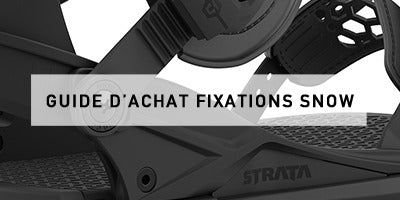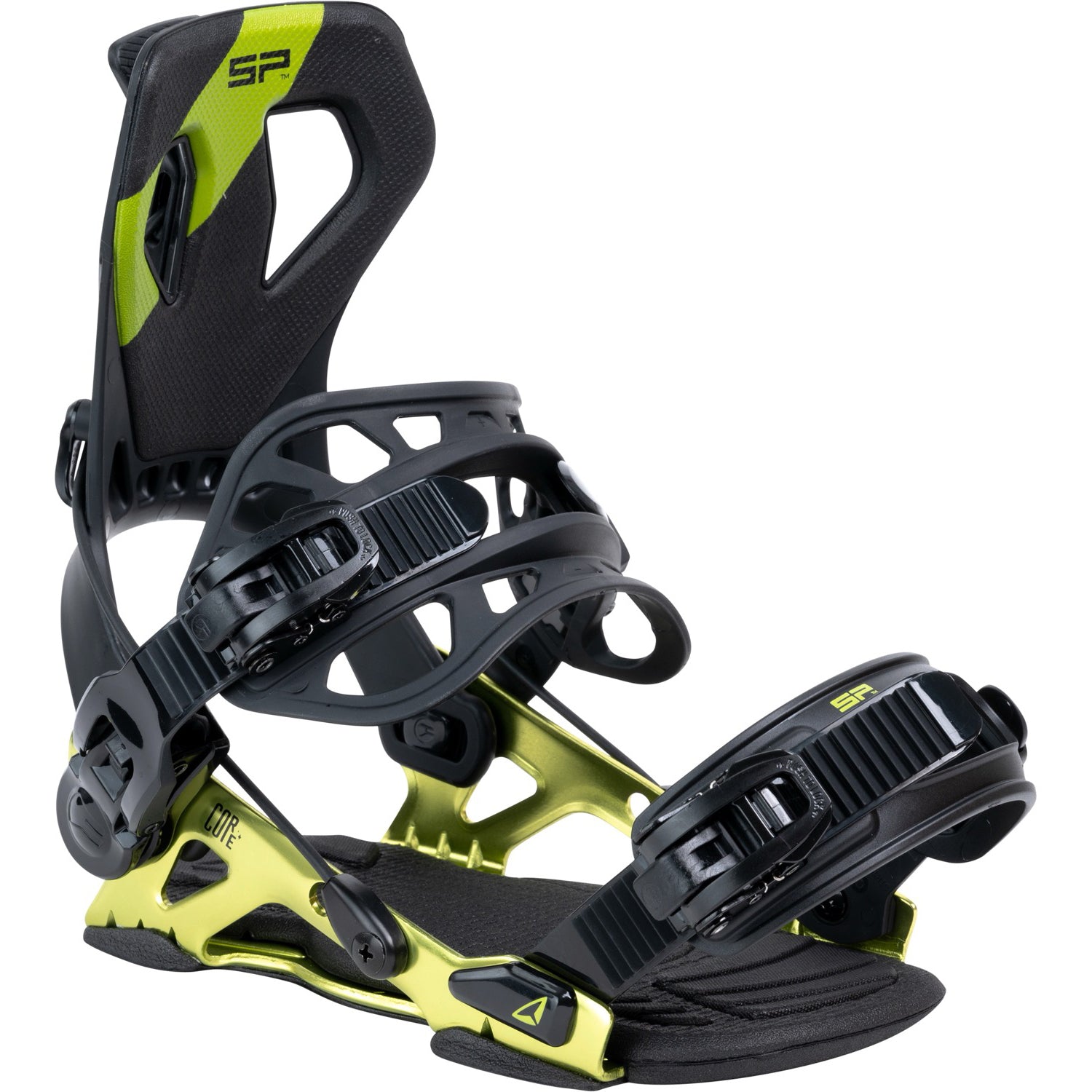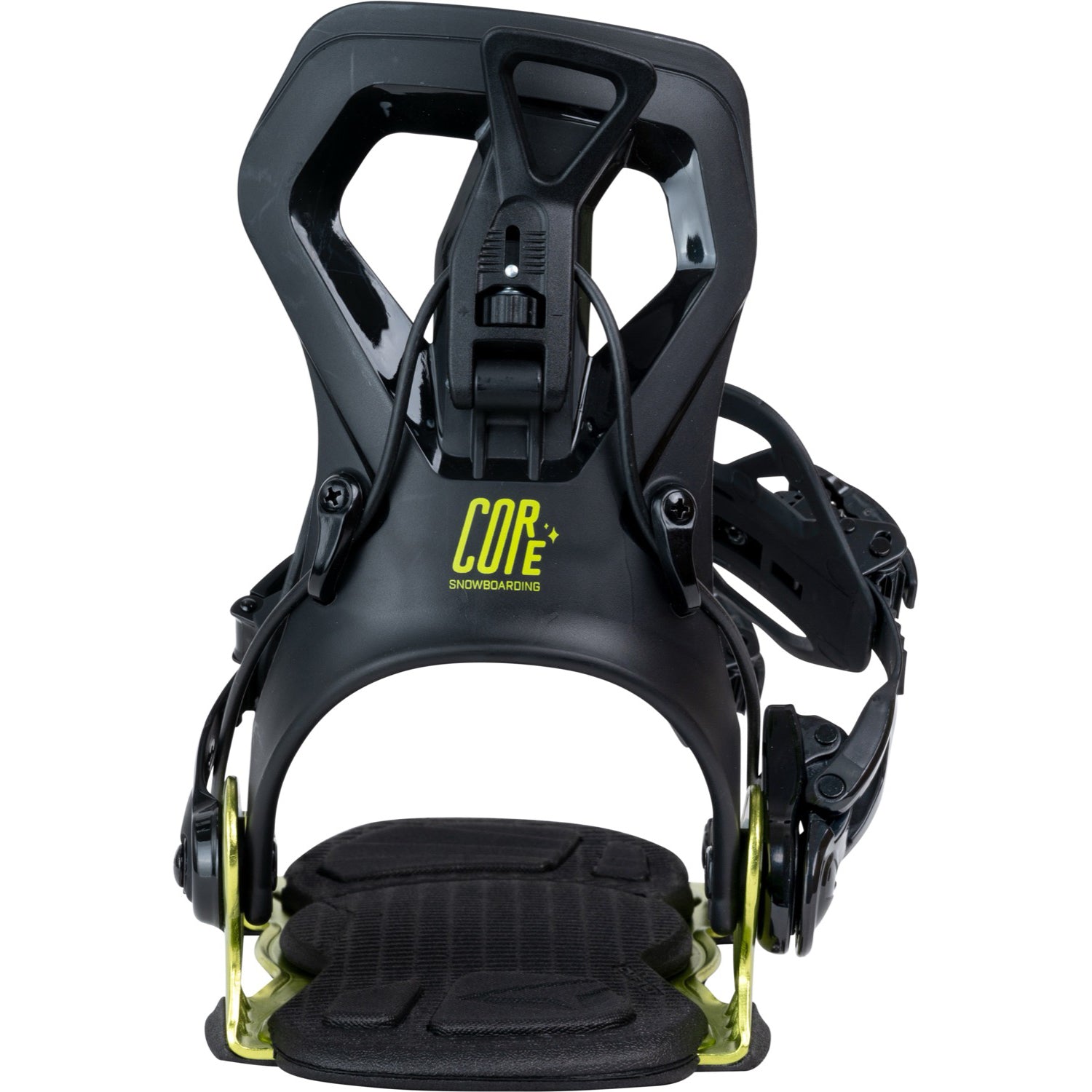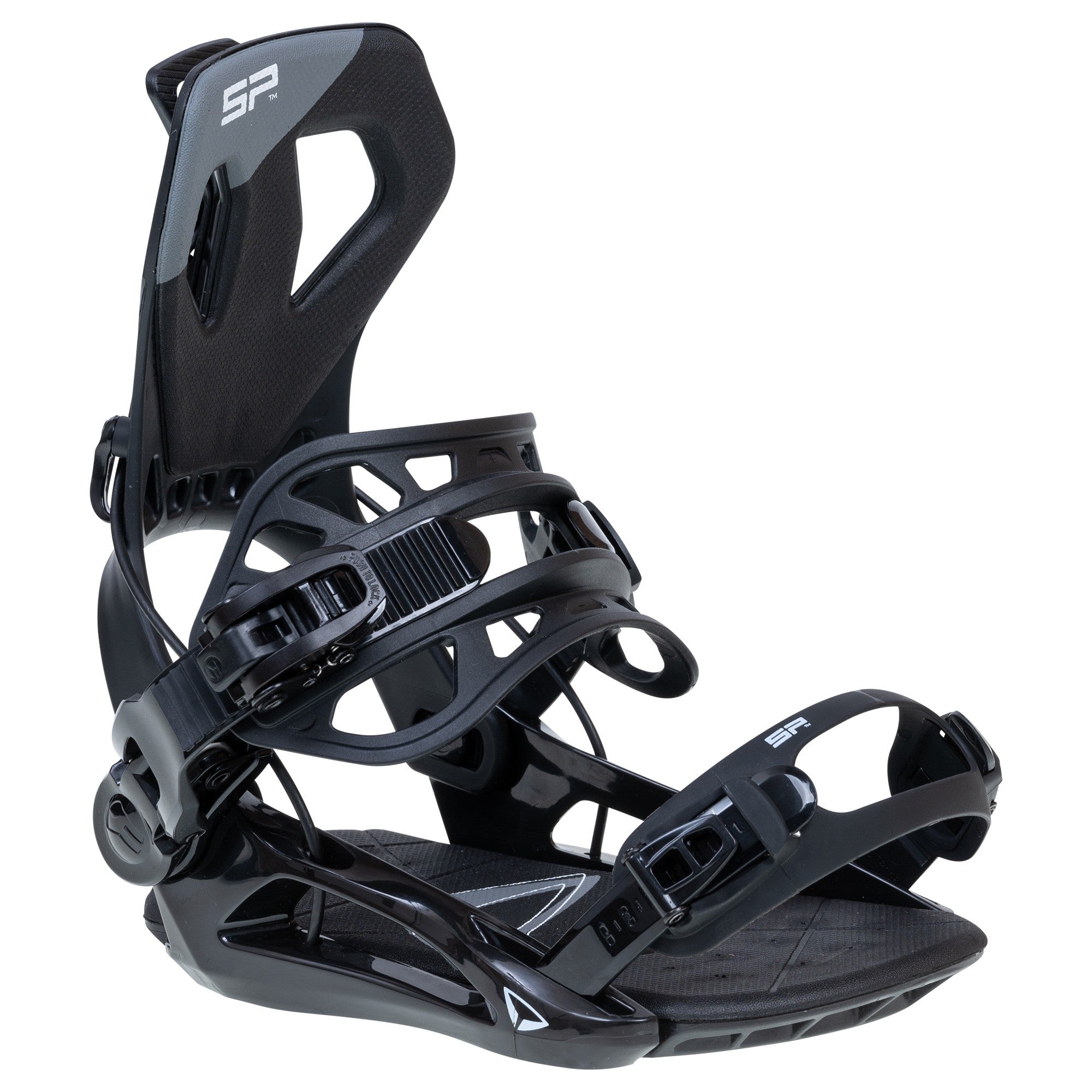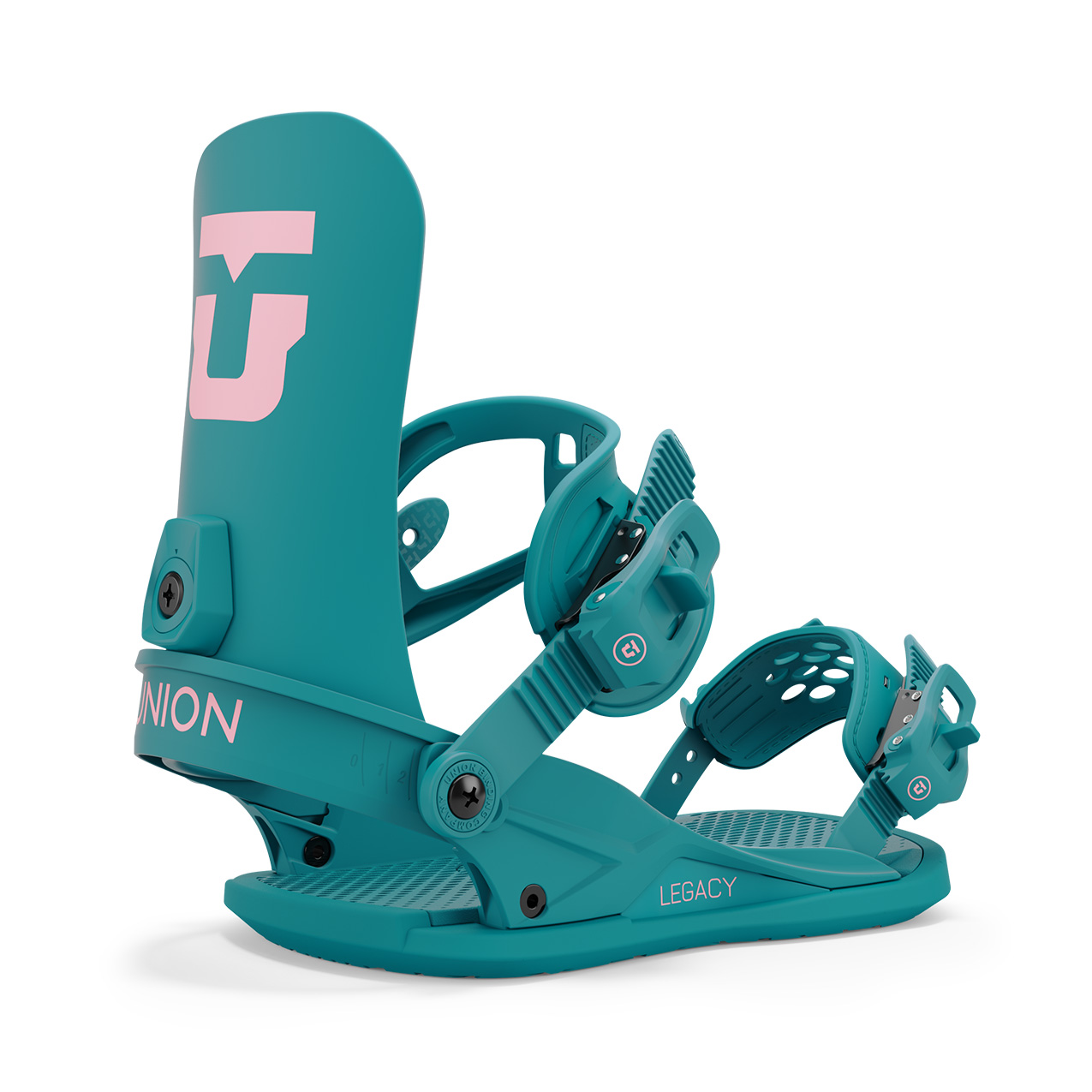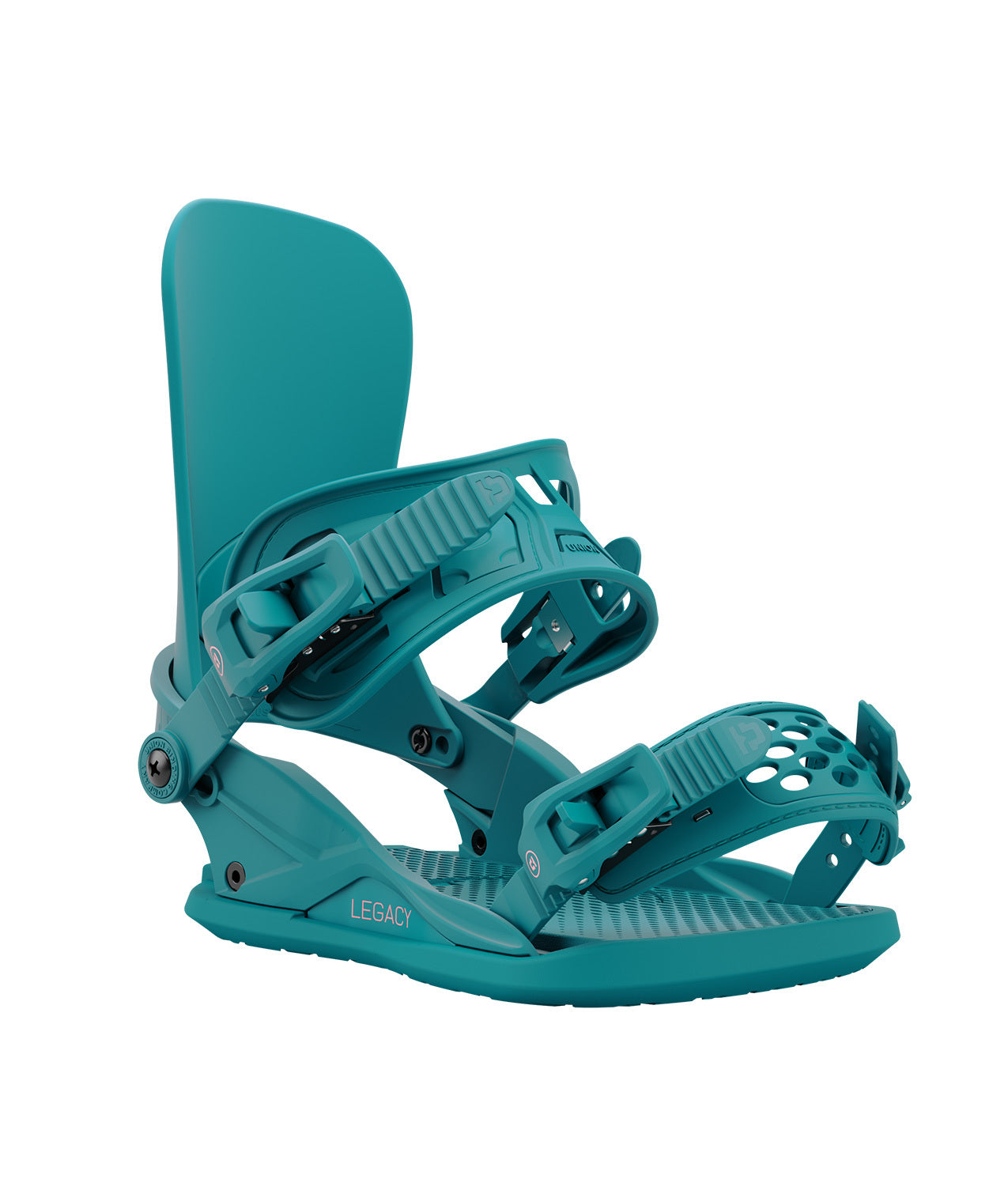Snowboard bindings buying guide
Bindings are essential for snowboarding, it is through them that body movements are transferred to the board. A good pair of bindings guarantees control, stability and comfort and must correspond to your practice (freeride, freestyle, etc.)
|
|
If the bindings match the type of board and its style, the riding experience will be better! |
The elements that make up the bindings:
The spoiler or highback
This is the part that supports the back of the boot, allowing the entire body to be stabilized on the board . A high, stiff spoiler is intended to improve control and stability. A soft, low spoiler is intended for beginners or freestyle practice for more freedom and tolerance . The bindings provided without spoiler are intended for experienced snowboarders to give a skateboard-style feel ensuring more mobility for the ankles but less control of the board.
The spoiler can have different features such as:
-
The wingback is an extension located at the top of the spoiler to extend the support area of the boot. This gives more support and precision in movements.
-
The Lowback is a slightly lower spoiler. It allows greater freedom of movement but offers less support. The lowback is recommended for freestyle riders.
-
The spoiler asymmetrical is adapted specifically to each of the rider's feet. The energy transfer will take place more quickly than with a symmetrical spoiler.
The base
It makes the link between the boots and the board . The sole acts as a shock absorber; it must fit perfectly with the boots to reduce the pressure the knees receive and give more pop . Freestyle riders are advised not to neglect this aspect of the binding so that shock absorption during landing takes place in the best possible conditions. Freeride snowboarders will prefer less cushioning for more sensation.
Freestyle binding
Freeride binding
The straps
They hold the boots in place. There are different versions:
-
The traditional strap "Toe Strap" covers the top of the toes. It just holds the boot in place but does not exert pressure to push it towards the heel. It is positioned above the toes, parallel to the board.
-
The Toe Cap strap fully covers the toes. This strap is located at the end of the boots. It holds it at the bottom of the spoiler and the base by exerting horizontal and vertical pressure. It has the advantage of being very comfortable for a long day of riding and allows excellent transmission of support.
-
The hybrid toe strap can be positioned like a classic toe cap or a traditional strap in order to satisfy the greatest number of riders.
-
The Ankle strap secures the top of the foot and ankle to keep the boots in place. It is wider than the toe straps and necessary for the functioning of the binding.
-
The One strap or one piece , mainly present on rear entry bindings, covers the entire boot by connecting the toe and ankle straps together.
The different fixing systems:
Classic starter:
The classic entry system requires opening the different straps of the binding to be able to slide your boots along the spoiler. You must then adjust the adjustment of the straps.
Rear entrance:
The boots enter from the back with a simple gesture : raise or lower the spoiler by sliding the boots under the straps. The enormous advantage of this type of binding is that it can maintain its tightening settings , ensuring ultra-fast putting on that can be done while standing .
|
|
Rear entry bindings offer great comfort of use |
Mixed entry
The two systems, classic entry and rear entry, are combined to offer the best of both systems . This way, you can insert your foot from the back but also easily adjust the straps.
Adapt the flex of the bindings to your practice:
The flexibility of the bindings is determined on a scale of 1 to 10 (1 being the softest index and 10 the stiffest). The flexibility of the bindings and the board are linked. So for a flexible board you need to equip it with flexible bindings and vice versa . Flex concerns the rigidity of elements such as the spoiler, the base or even the heel.
|
|
Beginners should favor soft to medium bindings |
All Mountain (versatile)
The all mountain category brings together riders who practice on all terrains , the bindings adapted to this practice have a medium flex (from 3 to 6).
Freestyle
Snowboarders who mostly stay at the snow park or who try as many tricks as possible on the side of the piste are considered freestyle riders . The bindings adapted to this practice are rather flexible in order to guarantee a wide margin of error, softer landings and superior maneuverability, particularly during rotations.
Freeride
This category concerns good snowboarders who move on slopes that are still unexplored or almost unexplored . Looking for speed and performance in deep snow, the right bindings must be stiff enough for better energy transfer and greater precision for each movement.
Choosing the right fixing size:
You will find the correspondence of sizes between bindings and “ traditional ” sizes in our product sheets .
To check that the binding size corresponds to that of the boots, you must check that they do not protrude excessively from the bindings when installed on them. Once the straps are adjusted and centered on the boots, the boots must be able to bend but must not move around in the bindings, particularly at the heel.
Compatibility of bindings with snowboards:
Like snowboards, bindings are equipped with different mounting systems . Fortunately most binding sets come with several discs or with universal discs.
The most common system is the 2x4 or 4x4 , all snowboard brands use this system except Burton (on EST models from Burton) and all bindings are compatible.
This system offers a good choice of stance (the distance between the feet).
|
|
|
|
|
Please note, the bindings equipped for 4x4 are compatible with 4x2, however the bindings equipped for 4x2 are not compatible with 4x4. |
The 3D system found only on Burton boards is also compatible with the majority of bindings with a special disc but it offers less choice for stance.
The ICS system (Infinite Channel System) is a binding system found on Burton and Endeavor boards. The insert holes are replaced by a sliding rail .
Some of our bindings are adaptable to this type of board which allows perfect stance adjustment.
|
|
If you can't find which snowboard our bindings are compatible with on the product sheets, it's which ones are compatible with 4x4 |
The angle of the fasteners
On all bindings it is possible to modify the angle of the latter on the board.
In all mountain and freestyle bindings generally take a positive angle at the front and a negative angle at the rear (for example +15°; -15° (recommended for beginners).
This position facilitates switching to switch , essential for freestyle practice.
The more experience the rider gains, the more he can increase the amplitude (for example +20°; -18°).
|
|
It is above all a story of feeling, the determination of the ideal angle depends on each person and is done empirically. |

